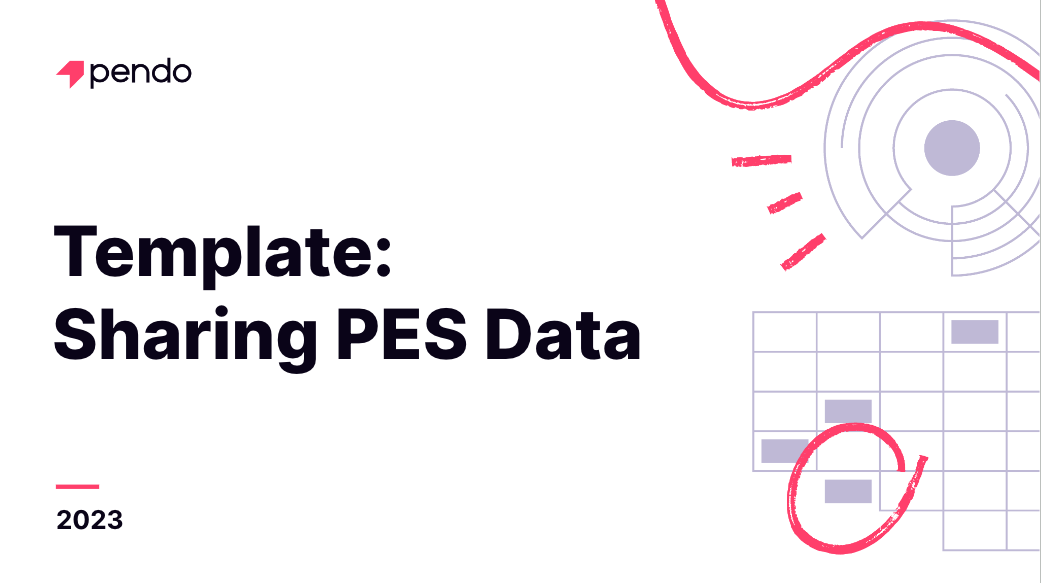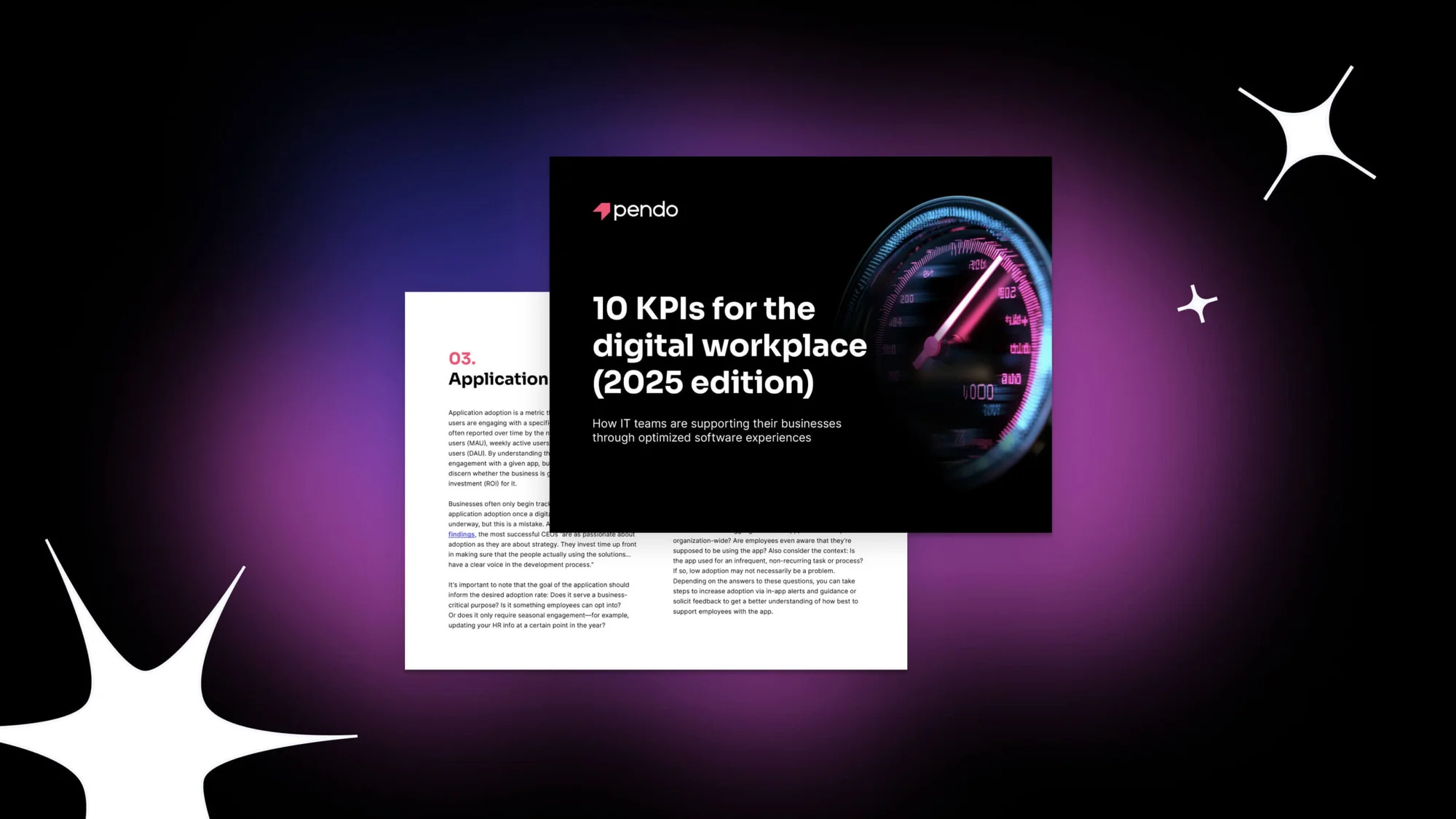ソフトウェア企業(最近ではほとんどすべての企業がそうですが)の取締役会に出席したことはありますか?もし出席したことがある場合、それがどのようなものだったかを思い出してみてください。どのような指標が提示され、議論されましたか?会話が年間経常収益(ARR)、売上維持率(NRR)、顧客獲得コスト(CAC)、解約率などに集中していたのではないでしょうか。
これらの指標はビジネスパフォーマンスの重要な指標ではありますが、実際には全体像のごく一部しか表していません。さらに重要なのは、これらの数字を把握したところで、通常はその数字に影響を与えるようなアクションを起こすには遅すぎるということです。
ある四半期に、収益予測が外れてしまった場合のシナリオを考えてみましょう。次に何が起こるでしょうか?パイプラインを強化し、マーケティング費用を最適化することはできますが、軌道修正できるようになるまでにはおそらく数か月かかります。
先行指標と遅行指標
In other words, business and financial metrics are lagging indicators: They measure past performance. In order to get ahead of things like customer churn or revenue loss, companies need to track leading indicators, which are measurable in a shorter timeframe and indicate future performance.
A key leading indicator for software companies is product usage. When product usage is decreasing, it can be a signal of low customer satisfaction or even potential customer churn. Data points like product usage over time, feature adoption, and workflow completion can serve as warning signs of product friction and issues—before it’s too late.
That said, companies should be tracking both leading and lagging indicators, especially when it comes to reporting business performance. By combining business and financial metrics with product usage metrics, you’ll be better able to build a successful product that leads to positive business outcomes.
But with so many product usage metrics to choose from, which one(s) should teams focus on? Enter: Product Engagement Score (PES).
プロダクトエンゲージメントスコア(PES)とは?
The Product Engagement Score is a composite metric that takes the average of a product’s adoption, stickiness, and growth—three metrics that are key to understanding product health. Our product team created PES to help product leaders boil product engagement down to a single number, making it easy to quickly diagnose how a product is performing. If and when PES shifts over time, teams can dig into each component to understand what’s causing the change.
ここでは、PESで使用される3つの指標の概要を説明します。
Adoption: This is a user activation metric that measures usage of a product’s key features or “aha moments.” For PES, adoption is calculated by taking the average number of these key features, also known as Core Events, adopted by all active visitors or accounts.
Stickiness: This measures how many users return to your product on a regular basis, and can be calculated three different ways:
- 月別ユーザーの再訪問日別比率(DAU/MAU)
- 週別ユーザーの再訪問日別比率(DAU/WAU)
- 月別ユーザーの再訪問週別比率(DAU/WAU)
Growth: This uses the Quick Ratio, which factors user growth, retention, and churn, and accounts for how efficiently the product is growing.
PESを使用してデータに基づく意思決定を行う
In addition to providing a clear measure of product engagement, PES is also especially useful in informing decision making. With PES, you can make data-driven product—and business—decisions like where to invest development resources, which features to sunset, and where to focus your team’s work.
プロダクトエンゲージメントスコアを使用して意思決定を行う場合、データが実際に何を伝えているのかを考えることが重要です。考慮すべきいくつかの例を次に示します。
- Low adoption: If you see low or decreasing adoption, try to determine why users aren’t engaging with these key features. Do you need to make the features more discoverable? Do you need to create in-app guides to walk users through tasks and workflows? It’s also useful to re-examine your onboarding experience—are you introducing your product’s most important features during onboarding? Hint: You should be.
- Low stickiness: If stickiness is low, this could be a sign that you need to invest in your user experience because people are using the product once, but not returning on a regular basis. You might also want to reach out to customer-facing teams to understand what’s happening at a specific account to cause the drop in stickiness.
- Low growth: If you see low or stagnating growth, it could signal that you need to innovate and expand your product portfolio. For example, you might have a cash cow product—one that has a large market share in a slow-growing industry—and the market is getting capped. You don’t want to dedicate all of your resources to a product that’s never going to grow. This PES data can help support a recommendation to expand into new product offerings.
Pendoをご利用のお客様は、PendoアカウントにPESがすでに設定されており、すぐにアクセスできます。PESのデータを、ユーザーレベルやアカウントレベルで時系列で表示できるため、各要素を掘り下げて、プロダクトエンゲージメントをさらに詳しく知ることができます。さらに、このデータを使用して行動を起こし、プロダクトを改善して、ビジネス全体に影響を与えることができます。
Ready to bring product usage data to the boardroom (and beyond)? Use this slide deck template to present your PES data effectively.




